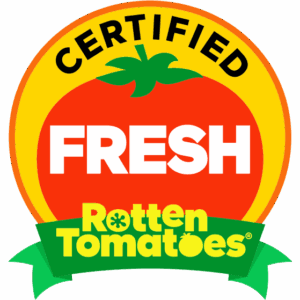Lesbian Space Princess Filmmakers Q&A
An inside look at the creative duo behind Lesbian Space Princess — discussing inspiration, animation, queer storytelling, and the joy of making a proudly camp, cosmic love story.
Lesbian Space Princess Filmmakers Q&A
An inside look at the creative duo behind Lesbian Space Princess — discussing inspiration, animation, queer storytelling, and the joy of making a proudly camp, cosmic love story.
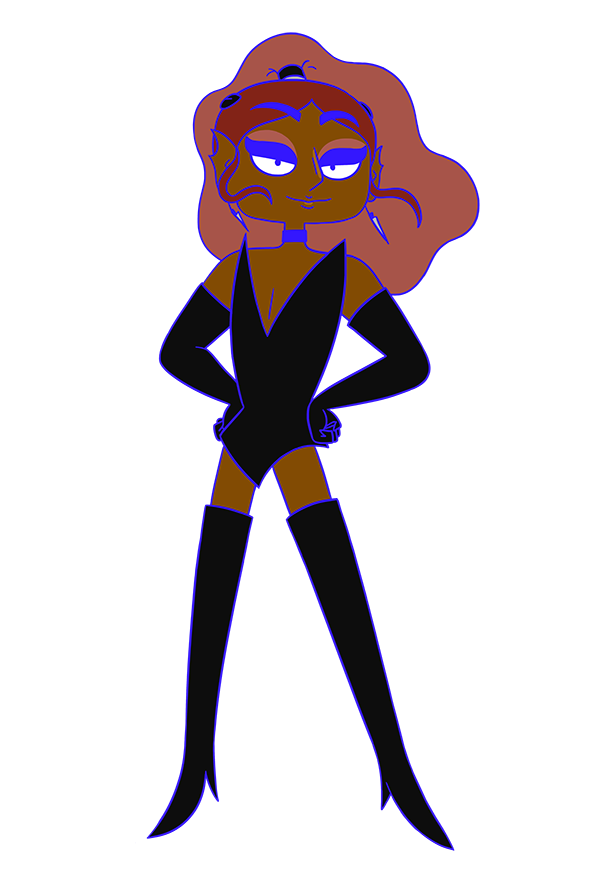
Lesbian Space Princess Filmmakers Q&A: Emma Hough Hobbs and Leela Varghese
What was the spark that inspired this film? Was there a specific moment, idea, or personal experience that set it all in motion?
Lesbian Space Princess was part of a film lab in South Australia, where we’re from, called Film Lab: New Voices. It was about giving first-time feature film directors the chance to make their first feature. We were figuring out what idea to apply to that. The story behind how we came up with Lesbian Space Princess is actually pretty funny—Emma had a shower and the title just came to her. So this is very much a title-first film. We had the title, and we built the film around it, knowing we really wanted to make something that championed not just the queer community, but also represented people of colour in animation and feature films—in leading roles. It feels like in Australia, that’s not usually represented on screen.
What made you want to tell this story through animation specifically? What can animation do for this story that live-action might not?
Emma is an animator herself, and we were really passionate about wanting to make something that not only showed that you can make an animation on a low budget in the indie space, but also championed queer voices and people of colour in adult animation, where those voices aren’t often the dominant voice. Animation gave us the chance to build a sci-fi world that empowered the queer community and people of colour in a way that felt warm, silly, and fun. Because it’s animated, it immediately feels more accessible, more inviting. That’s why we think animation was the perfect medium for this project—it allowed for rich world-building while keeping the tone approachable, which made it ideal for what we were trying to do.
How long did it take to bring Lesbian Space Princess from concept to completion?
It took about 3 years!
What animation techniques or software were used to create the film?
We used Toon Boom Harmony! It’s a great program made by and for animators, most big 2D shows like Rick & Morty use this software. For techniques we used a combination of digital hand drawn style for more action based shots paired with digital rigged puppets.
How would you describe the tone or style of the film, and how did you develop that voice? Was there a particular visual or narrative language you were aiming for?
I mean, from the title alone, you can tell that it’s a project that is very camp and has this unapologetic humour. It was really just me and Emma trying to make each other laugh. I think there’s authenticity to the humour—we’re not trying to be cool; we’re just trying to make something that we both like. And I think whenever you do that, there’s always going to be other people that get it—and people that don’t. But I think the only thing you can do in comedy is just really be genuine to your voice.
Can you talk about the soundtrack and sound design — how was the music chosen or created?
So Leela is a musician and musical comedian, and she wrote all the songs for the film on an acoustic guitar. Then they were produced by Michael Darren, who was also our amazing composer and sound designer. So the music side and passion was really led by Leela and Mike. When we wrote the screenplay, the songs became part of the narrative. The idea is that all the songs you hear in the film are sung by Willow. They’re working on an album during the movie, and all the songs you hear throughout the film end up being Willow’s album—Songs Specifically about Saira. It’s the album Willow writes about meeting Saira and joining Saira’s inter-gay-lactic space mission.
Did the team face any challenges in securing funding or support for an LGBTQ+ animated project?
This was a really unique project because it was funded through the Film Lab New Voice initiative, so not really. I think we were very lucky. The film probably wouldn’t have been made any other way, it never could have secured financing the traditional way. It’s a little bit of an anomaly, but we really do hope to see more projects like this, and to hear and see a lot more voices in animation that haven’t had their stories told before.
Why was it important for you to tell a queer love story (or coming-of-age story) in a sci-fi/fantasy setting?
I think, honestly, Emma is so across animation and so in tune with that audience that she knew this would be something the audience would love and find appealing. As creators, as we continue to work, we want to try to find gaps in the market—underserved audiences. So I think meshing a queer love story with a fantasy/sci-fi setting just felt like we were targeting the audience we really wanted the film to appeal to.
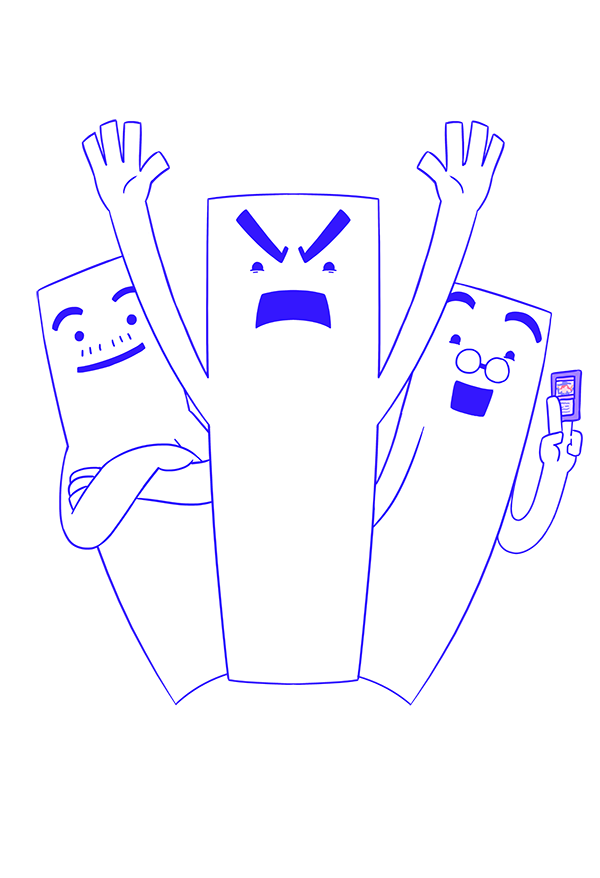
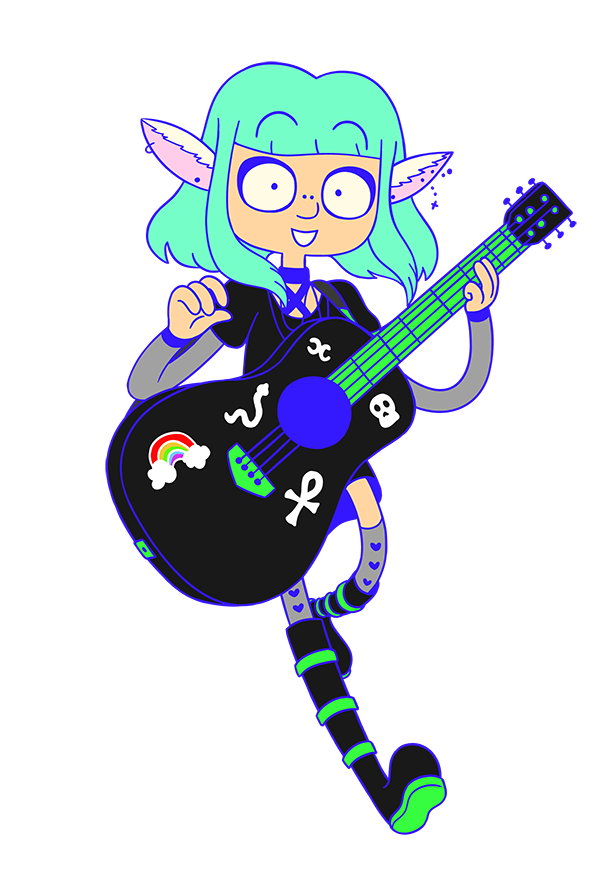
How do you think this film contributes to the growing landscape of queer animated films and series?
I think the film is, in some ways, one of the first steps for queer voices in adult animation—especially in feature films. It’s a bit of an experiment, and it should be a conversation starter. What does adult animation made by queer people of colour feel like? There hasn’t really been anything like Lesbian Space Princess—at least not in the sense of it being a queer adult animated feature film. It’s made by voices that aren’t the ones who have always dominated adult animation. So we see it almost like a first step on the moon, because queer animated sci-fi features like this just don’t really exist.
Were there any specific challenges in balancing humor with emotional depth in a queer story?
Absolutely. I think that’s the biggest challenge of every film—how do you get the balance right? This is our first feature, so it was a learning experience for us. We’re really happy with where it landed. We definitely look at it and see ways we’d love to evolve, elevate, and do things differently in the future. We had a great script mentor, Alex White, who always reminded us that we also needed to find the heart and emotional depth of the film. We were really lucky to have some great people offering us great advice while we were working on it.
What was your approach to character design and world-building? Did any queer culture, media, or personal experiences influence the visual style?
The world and character design of Lesbian Space Princess is influenced by so many things! Yes to all the above, a healthy dose of anime like Revolutionary Girl Utena and Sailor Moon, cartoons like Invader Zim and Adventure Time. The colours of the rainbow represent different planets and areas of the Gay-laxy and various LGBTQIA+ flag colour schemes are in the movie too. The fashion in the film as well is like the holy trinity of queer fashion, Saira is a sweatpants gay, Willow is big titty goth and Kiki is dykey as hell.
How did collaboration with animators, writers, or voice actors shape the film?
The film is the product of the animators, voice actors and team. Any film, really, is made by a village. In our case, it was a small, passionate village. The film you get, and the feeling you get from it, is as much a representation of the whole team as it is of us. It’s a representation of the generosity, hard work, and heart that everybody poured into the project. It informed the tone, the spirit, the humour—everything. We were really lucky. We had the most amazing team.
What films, shows, or creators have influenced your work—especially this project? Are there any queer filmmakers or animators that you look up to?
Big inspirations for this were shows like Adventure Time, Steven Universe, and Revolutionary Girl Utena. In terms of queer filmmakers/animators we look up to: Céline Sciamma, Emma Seligman, and Andrew Ahn.
How did you approach creating queer characters that feel authentic and multidimensional?
We just approached it and drew from ourselves. We liked the idea that nobody was “safe” in this movie—no one is necessarily a nice character. Like Saira makes questionable decisions. We wanted to show imperfect characters. Willow has moments where they show frustration and stand up for themselves, like in the confrontation with Saira. Kiki is someone who won’t lead you on, and she says it how it is. But she’ll also respect you if you do the same. It was about building the world and the characters and not holding back. We didn’t feel restricted, like we had to create queer characters “in a certain way” for it to be valid. At the end of the day, a film is just one story, made by two people—and these characters were just us being authentic to ourselves.
The title Lesbian Space Princess is bold — how did you land on it, and what does it mean to you?
Well, Emma had a shower, and the title just came to her. At first, it kind of started out as a joke, but Emma was dead serious. Our producer, Tom super into it; Leela took a little bit of convincing. What does it mean to us? It kind of showcases that the film doesn’t take itself too seriously. That’s its camp. It also clearly signals who the film is for. It’s so rare for queer people to get a film that is so clearly targeted at them. It’s a way of rebelling by being unapologetic and in-your-face—not subtle. We hope it makes queer people feel like it’s okay to do that, too. The boldness of the title is about claiming space and making people feel seen, safe, and encouraged to be bold in their own lives.
Were there any space opera or retro sci-fi inspirations behind the design of ships, worlds, or costumes?
Well the costumes are kind of like anti-space opera in a way. We wanted the characters to represent queer fashion that’s comfortable and shows off the different personalities of the characters. Whilst also being easy to cosplay 😉 The ship designs are inspired by a variety of things, the Problematic ship for example is a kit-bashed ship from the 21st century with a receding hairline look. The awesome spaceship brief was if the barbie spaceship was also a vibrator. We’re just having fun and taking things from queer culture / real life then flipping them on their heads.
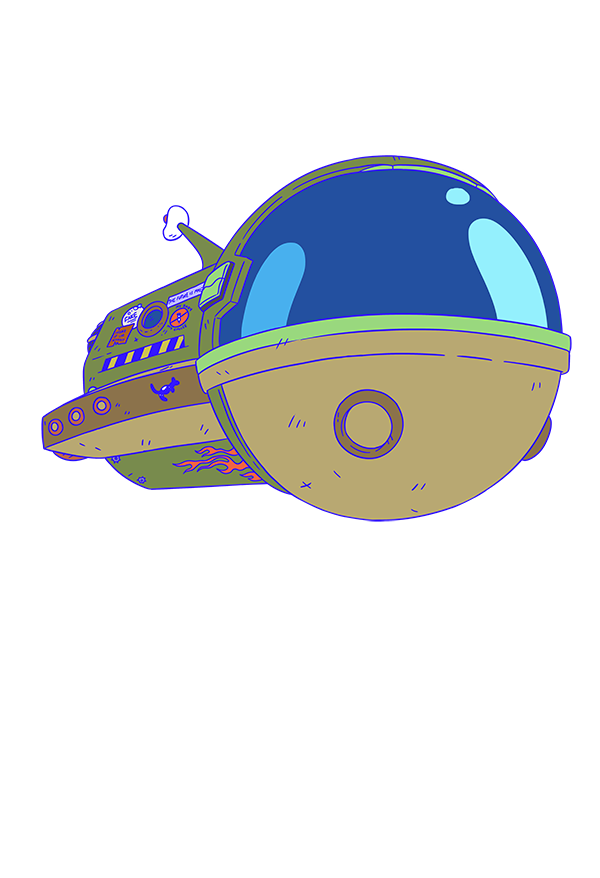
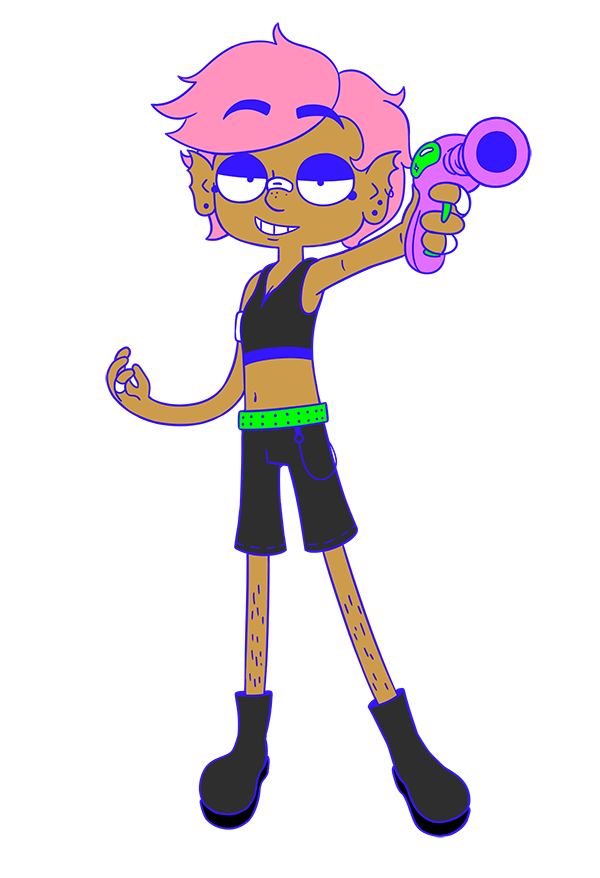
How does your own identity or lived experience inform your storytelling? (If comfortable sharing—this can be powerful in understanding your creative lens.
Oh it is completely, you know, the story. It’s like everything we’re making at this point, we’re drawing on like our own lives, our vulnerability, our own experiences. And even when you’re telling a story that, like, you know, is kind of like set in space, you still have to find that personal connection. And I think it really comes through. And so, like, yeah, no matter what we make, regardless of how much it is close to being a story that draws on our own life or far removed from it, we’re always going to find that part of ourselves in it that helps make it feel really authentic.
Were there any cultural references, inside jokes, or queer icons that inspired elements of the film?
I mean we have to mention RuPaul’s Drag Race of course, the queer self love mantra “If you can’t love yourself, how the hell are you going to love somebody else” is a big theme of the movie and I think that show definitely taught us a lot about how to have unrestricted love and celebration of the queer identity. As for inside jokes Saira’s phone key chain is queer icon the Babadook. Ikyk.
Are there any fun Easter eggs in the film that fans should look out for?
Yes, the dumbest and most difficult one we had to pull off was because Saira is “good with her hands ;)” we decided to give her 4 fingers and 1 thumb… That’s kind of an animation rule break, because it’s normal to shave off 1 finger to save time, but not in Saira’s case. Most of the easter eggs are hidden jokes in the background, there’s definitely stuff in there that will delight on a second watch.
How do you hope the movie contributes to the visibility of queer characters in mainstream animation?
I mean, we just hoped that it’s one of the steps along the path of getting to a point where queer characters in mainstream animation are not really… shouldn’t be—what’s the word?—it shouldn’t be revolutionary. And so really, like, we think by being very unapologetic with this film and with the success that it has, I hope that we’ll see a lot more queer characters in leading roles, in stories that could be played by anyone. And I hope that it just kind of opens the door for more creatives to get involved in mainstream productions.
Was there any fan reaction, viral moment, or early buzz that surprised you?
Yeah, I think, like, our preview screening that we had at Adelaide Film Festival, to be honest, we were just shocked that people were laughing. I mean, we never showed it to anyone before. And so, I think it just shocked us that it was funny. We’ve been working on it for so long that it was no longer funny to us. The fact that people laughed and continue to laugh all around the world continues to surprise us.
How did the Sexy Bitch sweatshirt come to fruition?
I mean, it became a part of the script that Saira was wearing a shirt or a jumper or something from Kiki. And then when it came to the design side of it Emma was experimenting with different looks and what it could be. And then we also had a whiteboard where we’d put up suggestions. And so, you know, for a while we were staring at different suggestions on the whiteboard. I hope we took a photo of that because I hope we have a BTS of what the other options could have been, because we kind of can’t remember them now. But yeah, we had a lot of discussions between the team and then also experimentation with what the jumper ended up looking like.
What would you say to someone who’s never seen a queer animated movie — why should Lesbian Space Princess be their first?
Because we’re poor and so please buy a ticket to the film, be an ally haha No, just joking. I think if you’re looking for a laugh, the themes are universal; it’s about trying to get over an ex-lover, you don’t have to be queer to enjoy the film. In fact, the production company that made and love this film are straight white maliens themselves. So, if you’re looking for a light-hearted, feel-good, fun night out, then go see this movie.
How do you hope queer audiences connect with this film? And what do you hope non-queer audiences take away from it?
I guess across the board, like, for anyone watching the film, the heart of the film is all about self-acceptance and self-love. So we hope it reminds people to be kind to themselves and look at if they truly do love and accept themselves, which I think in general is, like, a really cool, important thing for everyone. But especially, I think, for queer people because they will face so my struggles with self-acceptance. But also this film is not taking itself too seriously. It is proud to be silly, to give you a laugh, to show that there can be queer content that doesn’t have to be, you know, about struggles. I think, like, this film is about embracing that you can laugh and you can have queer joy and you can—the film makes you feel empowered. We always say we hope all the queer people and people of colour feel seen, and that for the next 87 minutes, they ruled the galaxy. So honestly, the main aim, though, if we’re keeping it really simple, is it was always to make queer audiences just have some joy and laugh.
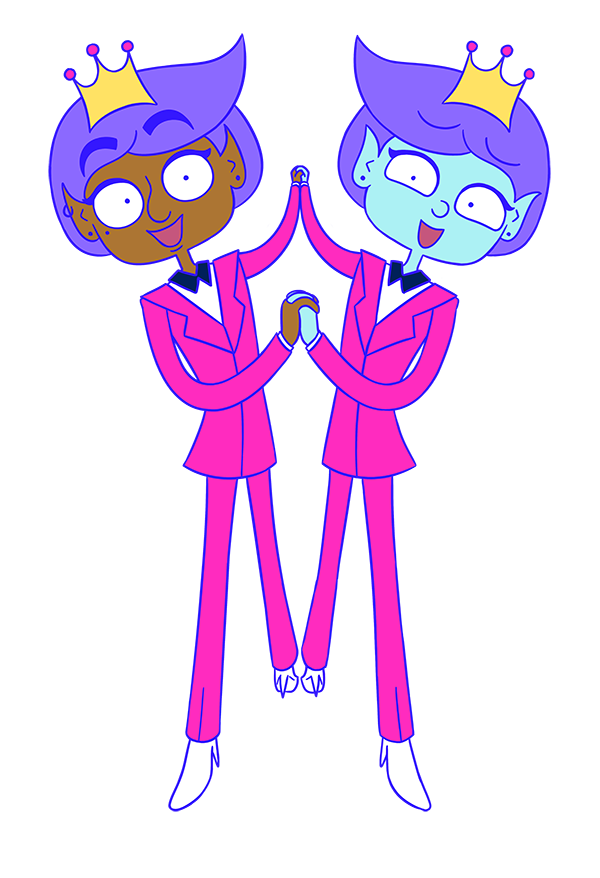
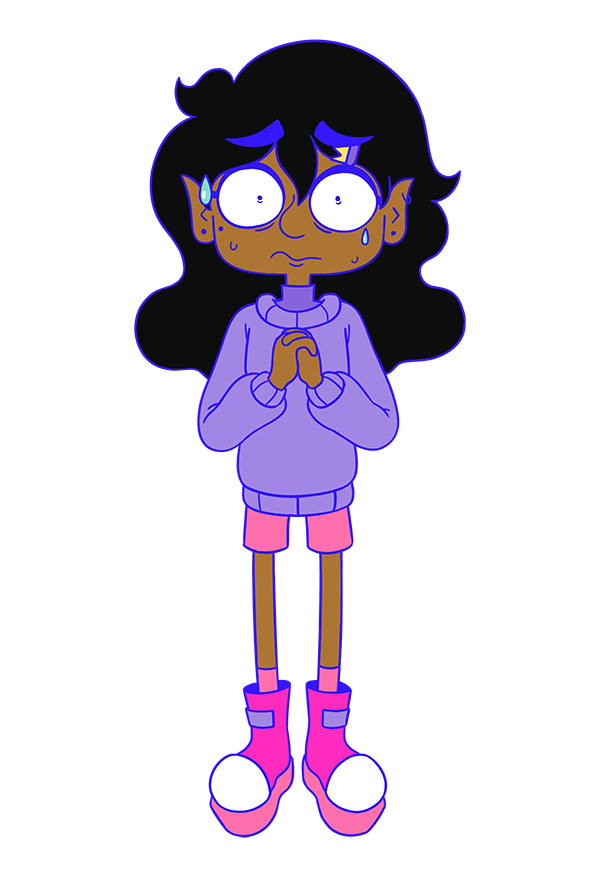
Are you hoping this film will lead to a series or spin-offs in the same universe?
We’re hoping that Lesbian Space Princess becomes an example for queer art to be seen as more commercial and valuable than previously, especially in animation. We definitely want to keep telling queer animated stories that are funny and provide a safe space for the community. We would love to do a sequel as a game to be honest.
How can audiences watch Lesbian Space Princess — will it premiere at festivals, be available for streaming, or hit theaters?
Check out the Lesbian Space Princess instagram and website for more info! It’s different in every country but there will be a variety of opportunities to catch Lesbian Space Princess, whether on a big or little screen, we want to share it with as many people as possible.

